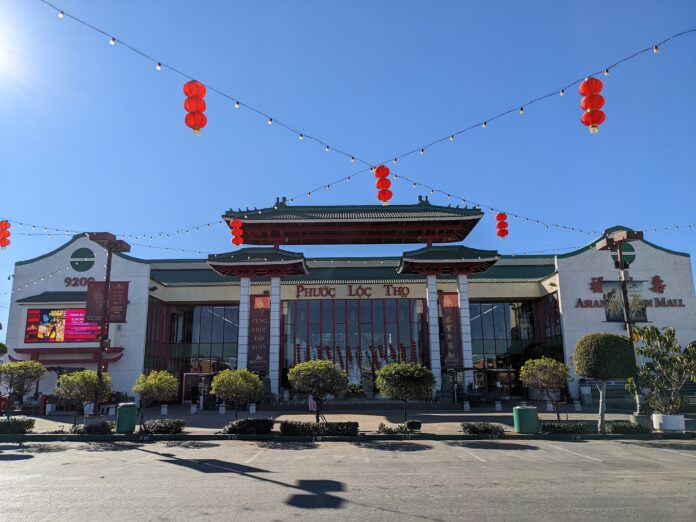[Image] Source: DHN via Wikimedia Commons
by Nigel Whan, AsAmNews intern
In the aftermath of the pandemic, malls across the United States have had to grapple with profound changes to the retail market. Many are struggling to regain their footing. But there’s an exception—Asian American malls, which NBC News reports are still seeing strong demand after the pandemic.
With strict lockdown measures and social distancing guidelines, foot traffic in malls dropped precipitously, losing so much revenue that it became a struggle for mall owners to even keep their doors open.
Subject to the same pandemic response rules as other American malls, Asian American malls shared in the struggle to make it through lockdowns. However, afterwards they sprang back to life, especially when compared to other malls.
According to Capital One Shopping Research, the mall vacancy rate is more than double the average retail vacancy rate, and up to 87% of large shopping malls might close in the next 10 years. Asian American malls break that trend.
Unlike most American malls—essentially collections of a few department stores—Westminster CA’s famous Little Saigon shopping center, the Asian Garden Mall (Phước Lộc Thọ in Vietnamese) is a remarkably important center of the community. The mall hosts a famous night market, cultural festivals, restaurants and plenty of other entertainment, in addition to the more traditional options of jewelry and clothes shopping.
Yena Kim, one 16-year-old patron who spoke to NBC News said that “At American malls, you kind of just go shopping — here you come for the entertainment.”
The pandemic brought about major shifts in consumer behavior, with e-commerce cutting into the mall’s share of the retail market—but Asian American malls tend to attract people for social reasons, not just shopping.
James F. Zarsadiaz, a professor of history at the University of San Francisco who studies urban, suburban and Asian American histories told AsAmNews, “A lot of these malls, these Asian American malls, have successfully rebounded because also a lot of these malls are typically very much more mixed in terms of the retail options that they have.”
He continued, saying “It’s not just all clothing stores and jewelry stores, it’s clothing stores, jewelry stores, boba shops, restaurants, Asian dessert places and everything in between, where you could theoretically spend your whole day at a mall.”
Couple that with the businesses in these malls all being oriented towards an Asian clientele, it becomes easy to spend a lot of your dollars in one place.
Further, Zarsadiaz pointed out, “One could easily argue that the cultural emphasis on family life also means that these malls are often seen as these very family-friendly spaces where people can commune. Particularly for a lot of Asian immigrants and refugees, if they do not feel as comfortable gathering and socializing in a more quote-unquote ‘mainstream’ shopping center or plaza, these Asian American malls allow them to have that hallmark of American life, shopping and being at the mall, but with an Asian dimension to it.”
Zarsadiaz also credited some of the success of Asian American malls to the transnational reach of their tenants—international companies and stores selling imports offer products Asian Americans want, that other shopping centers can’t provide.
But he finds it hard to think of how the success of Asian American malls could be used as a model to revive other malls “because in a way these Asian American malls thrive because there’s not a lot of them.” That allows Asian American malls to consolidate numerous brands and stores into a single shopping center, and have a hold on their market—something that’s not really possible for a former Westfield mall.
Support our June Membership Drive and receive member-only benefits. We are 27% of our goal of $10,000 in new donations and monthly and annual donation pledges by the end of the Month.
We are published by the non-profit Asian American Media Inc and supported by our readers along with the Robert Wood Johnson Foundation, AARP, Report for America/GroundTruth Project & Koo and Patricia Yuen of the Yuen Foundation.
You can make your tax-deductible donations here via credit card, debit card, Apple Pay, Google Pay, PayPal and Venmo. Stock donations and donations via DAFs are also welcomed. Contact us at info @ asamnews dot com for more info.




